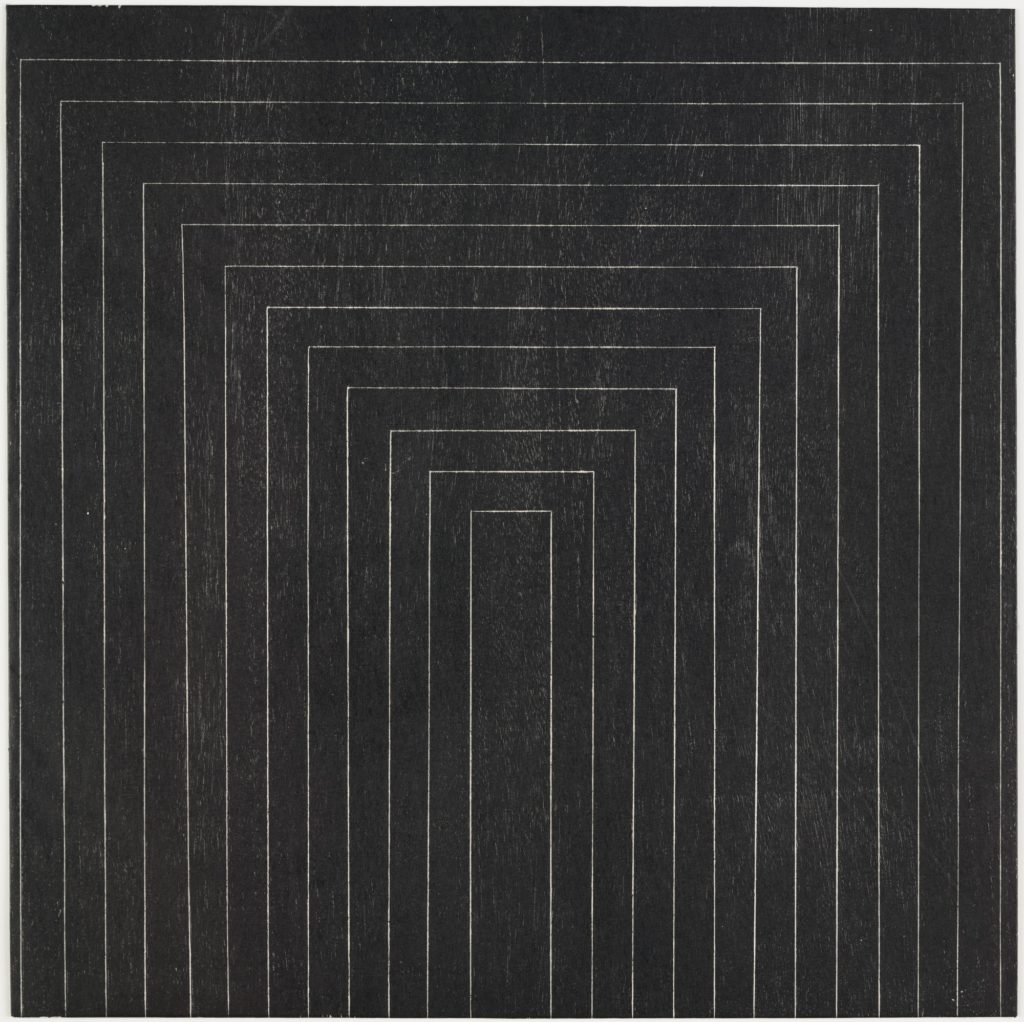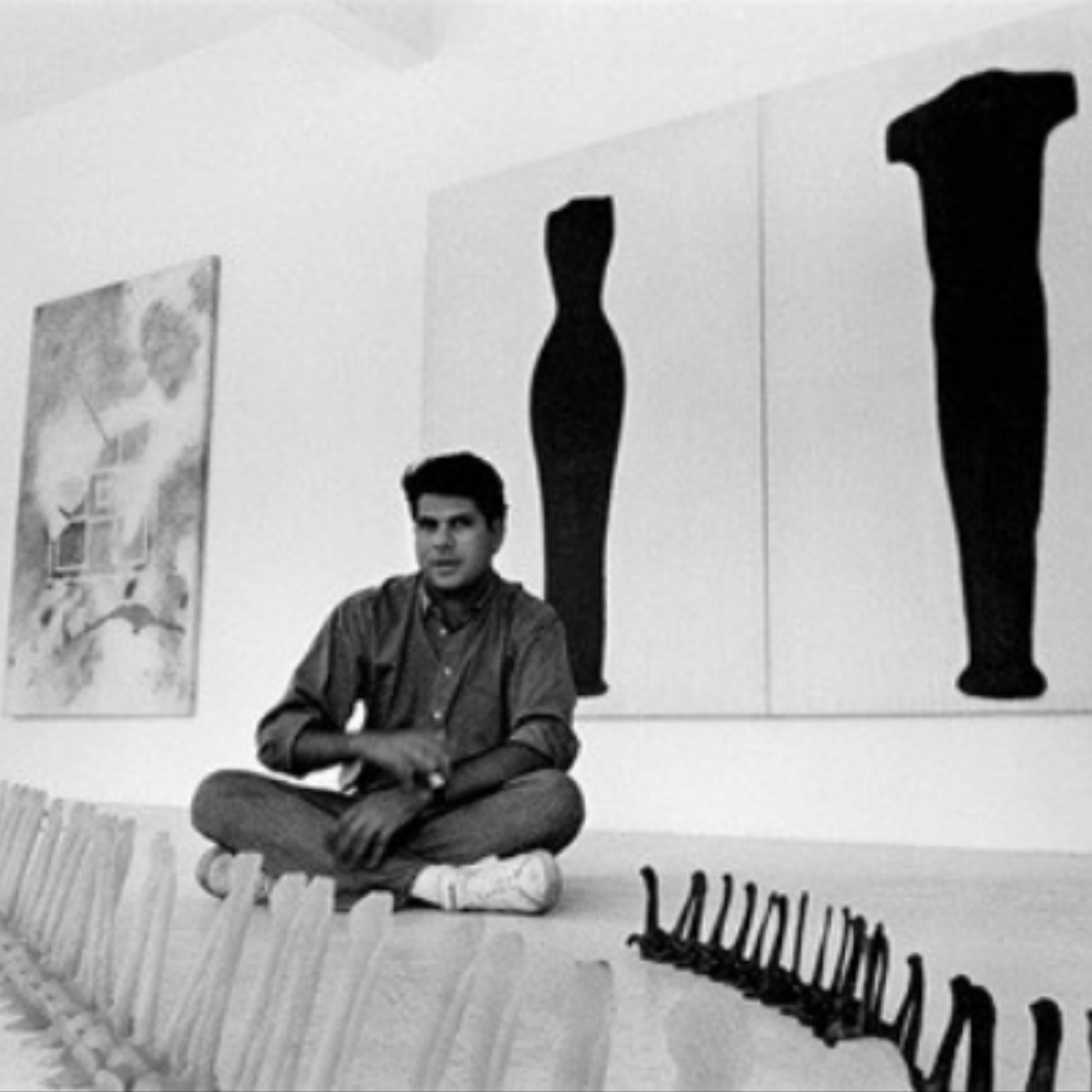Marcantonio Vilaça, Brazilian art collector. Photography © Marcantonio Vilaça National Industry Award
Marcantonio Vilaça (Recife, 1962-2000) was a Brazilian art collector, a galerist and a sort of a prophet of his generation, he was called “the prophet of colors”. He fought for the visibility of contemporary Brazilian art in the world: he carried the works under his arms, handling packages and packages of art works, packing and unpacking them, assembling and disassembling exhibitions. He managed to be part of several artistic sectors. He articulated in famous museums with directors and important collectors; in specialized magazines with editors; he also worked in international fair organizations, in the art market and publishing market.
Vilaça has also invested in exhibitions of foreign artists in Brazil, guaranteeing Brazilian public access to contemporary world production. For authors and art critics, he is considered to be the most significant Brazilian gallery owner in the 20th century. He faced the crises of a yet restricted and amateur market when compared to the international art market and invested in the contemporary art circuit, fairs and foreign collectors, meeting the ambitions of revealing artists and gallery owners between the 1980s and 1990s.
In the 1980s, he directed the art magazine Galeria and in 1992, he opened his the Camargo Vilaça Gallery in the city of São Paulo. Vilaça loved art all his life, and for this reason this article is titled “The size of a dream”: it’s a homage to the opening text of the gallery in 2003, written by the father of the art collector, minister and member of the Brazilian Academy of Letters, Marcos Vilaça.
From Recife to the world
In his childhood, he was interested in plastic arts, having attended Augusto and Abelardo Rodrigues’ Art School. Ever since he was a boy, he developed a peculiar way of seeing things. At the age of 15, he acquired his first work of art: a Woodblock print by Gilvan Samico. It was the first work in his collection. At the age of 29, he already had a collection of 500 art works, mainly of artists from the 1980s and neo concretes from Rio de Janeiro.
At 37, he ended his collection with a video by Hadrian Pigotti. His collection was considered one of the most expressive and respected of the 1980s, marked by a diversity of materials, styles and concepts, ranging from avant-garde names of his generation such as Ernesto Neto, José Leonilson, Vik Muniz, Nuno Ramos and Beatriz Milhazes, also including references from predecessor generations like Helio Oiticica, Franz Weissman and Lygia Pape.
His international footprint was intense, not comparable to what other Brazilian gallery owners obtained abroad, the collector was already in the 1990s one of the organizers and member of the appraisal committee for new projects at the ARCO Madrid Fair, as well as Latin American ambassador at the Swiss Art Basel and art advisor at the Biennial of Venezuela.
He was like a hurricane. Marcantonio Vilaça questioned the positioning of the elite at the head of cultural institutions, the archaic structure and the little disclosure of national cultural production inside and outside the country. Rising up to a kind of “ambassador” of Brazilian contemporary art at main international fairs and galleries, he made innovative figures in this area intensely visible. He became a spokesman for the most well-known artists in the art market in Latin America, along 22 years of collecting and promoting Brazilian art to the world. Despite all the international travel, he acted intensely in Brazil. The art collector traveled a lot, and rested where he wanted: in Pernambuco. And so it was, Marcantonio Vilaça died early in January 1st, 2000, at the age of 37, in Recife.
A light that never goes out
Although Marcantonio Vilaça is not present among us, his contribution is still notable until today. In the form of public prizes to promote contemporary art, it currently validates the importance of promoting art throughout Brazil. Currently, two awards still exists:
CNI / Sesi created The CNI SESI SENAI Marcantonio Vilaça Award for Visual Arts in 2003, the most important art prize in Brazil, aims to create approximation, in a democratic way, between art, culture, and knowledge.
Centro Cultural TCU Contest: Through Resolution-TCU Number. 161, in 2003, at the Federal Court of Accounts (TCU- Brazil), the Marcantonio Vilaça Cultural Space was created, a renowned curator council selects the projects. In the year of 2019: the projects must contemplate some of the 17 UN Sustainable Development Goals and help to promote citizen education through art.
The poet Fernando Pessoa once said: “A man is the size of his dream”. Vilaça is still a giant today. His light is immortal and continues to illuminate Brazilian artists and makes us remember whenever possible that in difficult times, only art saves.
Some honors
– Caixa Econômica Federal (Brazil) in January 2000, held in its memory, at the Museum of Modern Art Aloísio Magalhães (Mamam), in Recife, the exhibition Acervo Caixa.
– On February 27, 2000, at the Bonakdar Jancou Gallery, in New York, a tribute was held in Marcantonio Vilaça’s memory. On the occasion, Paulo Herkenhoff, curator of MoMA, highlighted the Brazilian artist as the most authorized voice in the Latin American art market.

– During the Brazil-Portugal Congress in 2000, in the city of Porto, the Minister of Culture of Portugal, Manoel Carrilho, paid tribute to the memory of Marcantonio Vilaça in the presence of about one hundred Portuguese-speaking writers. The poet and academic Carlos Nejar, official speaker, highlighted the relevance of his role in promoting plastic artists from both countries.
– Editora Cosac and Naify, in 2001, launched, in his honor, the book Marcantonio Vilaça. The work brings photos of the collection and the life of the gallery owner. There are 336 pages composed of screen reproductions, installations, sculptures and photographs that bear the signature of names such as Cildo Meireles, Amilcar de Castro, Rosângela Rennó, Leda Catunda and others. The book also includes testimonies from his parents, Marcos Vilaça and Maria do Carmo Vilaça and texts signed by Paulo Herkenhoff, Angélica de Moraes, Alexandre Melo and Dan Cameron.
In recognition of the services provided to our culture, the Brazilian government awarded him (post mortem) the highest decoration in the country: the Order of Rio Branco, given to the Vilaça family.
By Nathalia Reys, contributor



